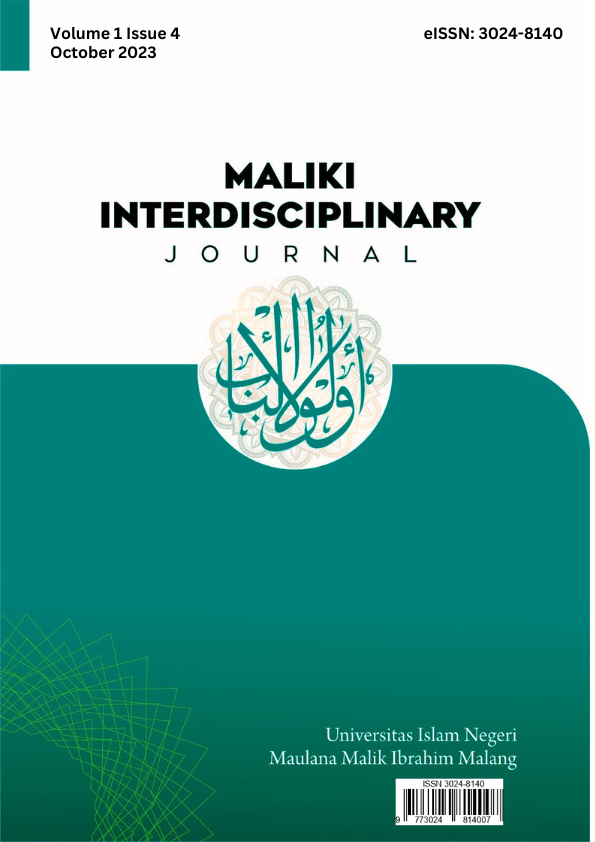Ashabul A’raf dan Konsep Manzilah bayn al-Manzilatain
Studi Komperatif Tafsir al-Kasysyaf dan Tafsir Ibnu Katsir
Abstract
The Qur'an teaches that there is another better life after the life in this world called the Hereafter. It is in this afterlife that all beings account for their deeds while in this life. If his good deeds are more then he will be in heaven, while if his bad deeds are more, he will be in hell. In the Qur'an, there is also a verse that describes a place called Al-A'raf, a place that exists between heaven and hell. Regarding this, the mufassir scholars have different opinions as to who and how the fate of the occupants of Al-A'raf. One of the famous mufassir from among the Mu'tazilites, al-Zamakhshari in al-Kasysyaf interprets that the inhabitants of Al-A'raf are Believers who commit great sins. He did not go to heaven because of his sin and did not go to hell because of his faith. This interpretation was strongly influenced by the Mu'tazilite teachings known as manzilah baina al-Manzilatain. Another mufassir who is no less famous, namely Ibn Kathir in Tafsir Ibn Kathir interprets that the inhabitants of Al-A'raf are people whose good and bad deeds are balanced. They waited on high (Al-A'raf) until Allah decreed them to go to heaven. Because of that difference, the author wants to examine the differences in the interpretation of these two mufassir through methods, interpretive approaches, and the scientific background of the mufassir.
Downloads
References
Adz-Dzahabi, M. H., Husein, M., & Ilyas, H. (2015). Penyimpangan-penyimpangan dalam Penafsiran Al-Qur’an. Raja Grafindo Persada.
Eliade, M. (1995). The Encyclopedia of Religion (C. Adam, Ed.). Macmillan.
Ghafur, S. (2008). Profil para Mufasir Al-Qur’an (A. Salamullah, Ed.). Pustaka Insani Madani.
Humaira, D., Nisa, K., & Al-Qur’an Dan Tafsir, I. (2016). UNSUR I’TIZALI DALAM TAFSIR AL-KASYSYAF (Kajian Kritis Metodologi Al-Zamakhsyari). In Annas Rolli Muchlisin Maghza (Vol. 1, Issue 1).
Khan, M. (2012). 100 Muslim Paling Berpengaruh Sepanjang Sejarah. Buku Noura.
Kuswaya, A. (2009). Metode Tafsir Alternatif: Kritik Hassan Hanafi terhadap Metode Tafsir Klasik. Mitra Cendekia.
Mustaqim, A., & Qudsy, S. (2008). Pergeseran Epistemologi Tafsir. Pustaka Pelajar.
Quthan, M. (1995). Pembahasan Ilmu Al-Qur’an. Rineka Cipta.
Sholehudin, M. (2020). Kontekstualisasi Konsep Keluarga Sakinah: Pergulatan Pemikiran Hukum Keluarga dalam Tafsir Salaf. Hukum & Syari’ah, 12(2).
Tafsirquran.id. (2021, March 18). Siapakah Ashab Al-A’raf itu? Tafsir Surah Al-A’raf Ayat 46-49.
Wargadinata, W. (2007). Perkembangan Pemikiran Zaman Abbasiah sebagai Akar Tafsir ilmy Abad Modern. 9.
Zakiyah, E. (2022). Teosofi (Modul Pembelajaran tentang Mengenal Tuhan).
Copyright (c) 2023 Fitria Ningsih

This work is licensed under a Creative Commons Attribution-NonCommercial-ShareAlike 4.0 International License.
- Authors retain copyright and grant the journal right of first publication with the work simultaneously licensed under a Creative Commons Attribution License that allows others to share the work with an acknowledgement of the work’s authorship and initial publication in this journal.
- Authors are able to enter into separate, additional contractual arrangements for the non-exclusive distribution of the journal’s published version of the work (e.g., post it to an institutional repository or publish it in a book), with an acknowledgement of its initial publication in this journal.
- Authors are permitted and encouraged to post their work online (e.g., in institutional repositories or on their website) prior to and during the submission process, as it can lead to productive exchanges, as well as earlier and greater citation of published work.





